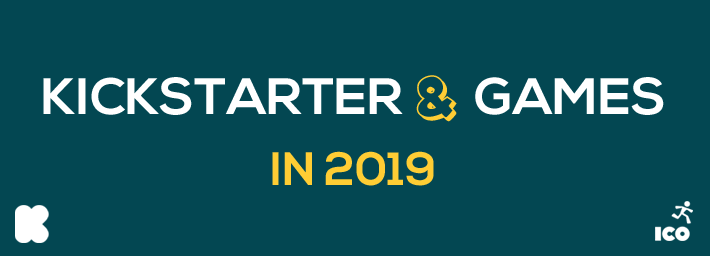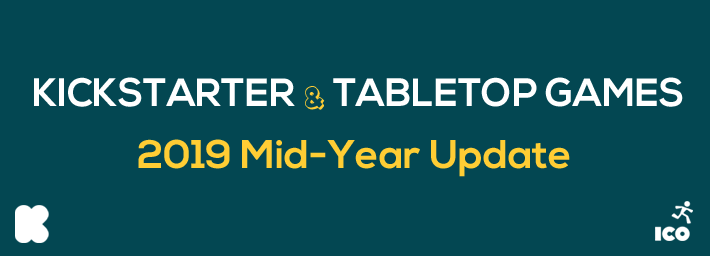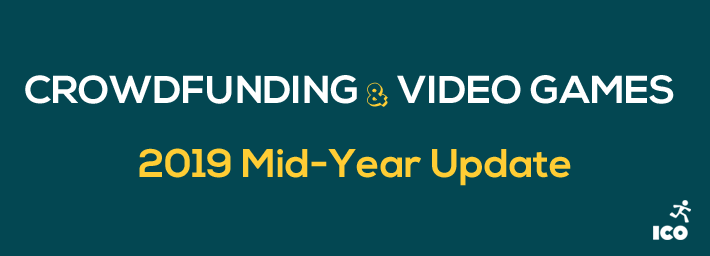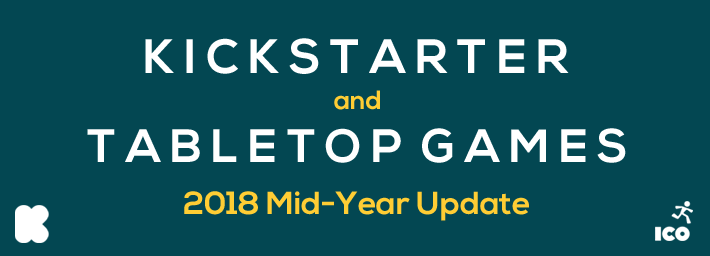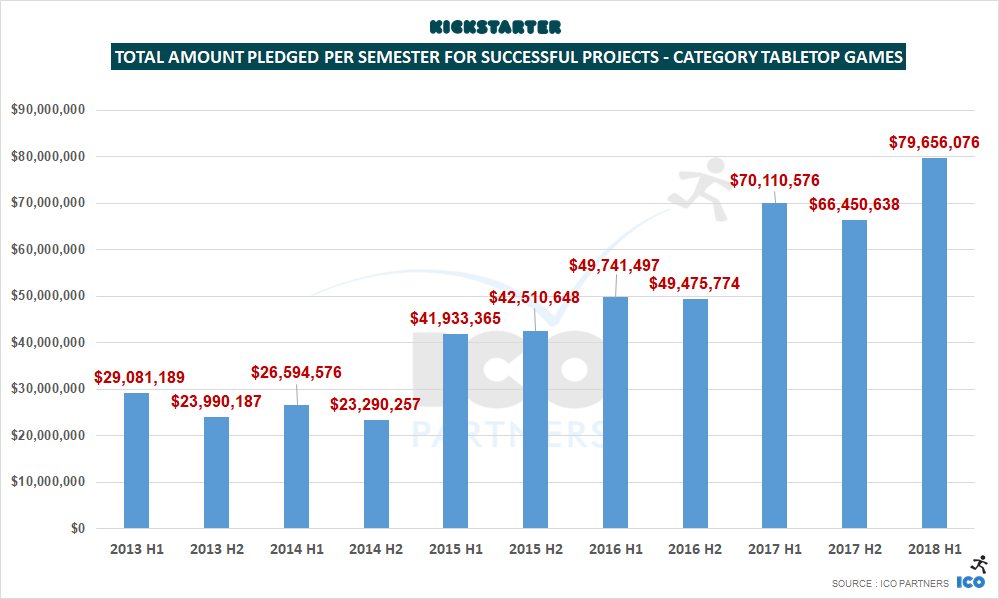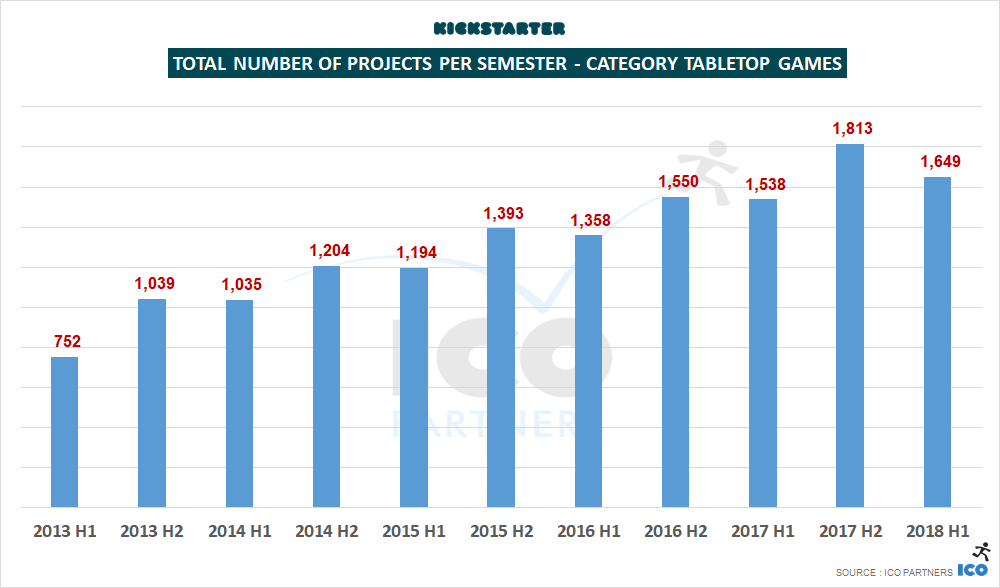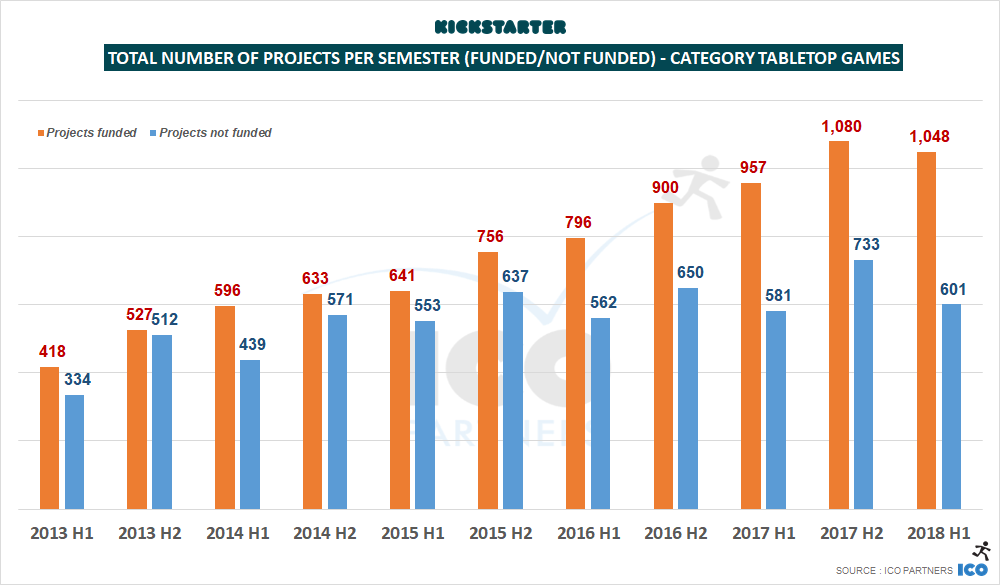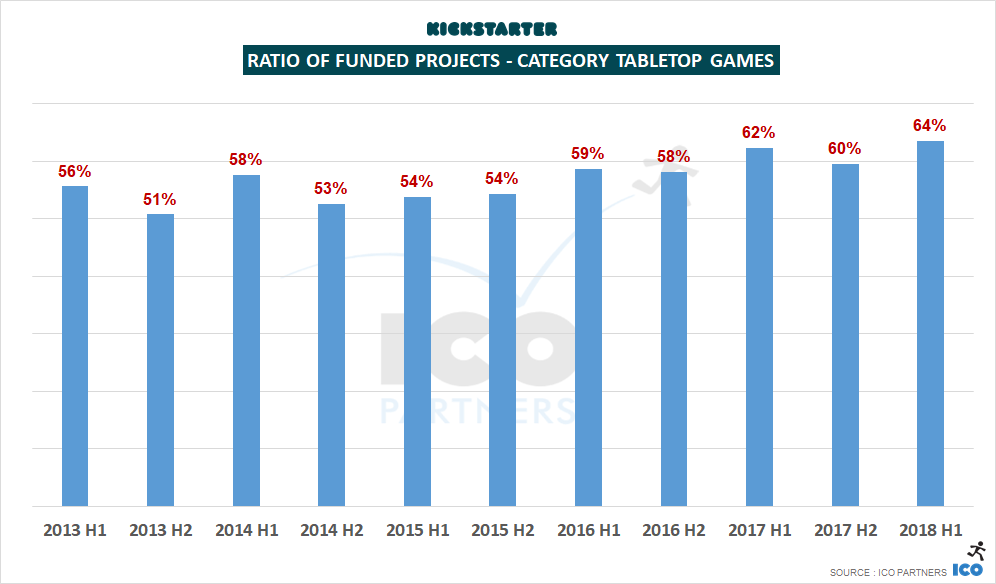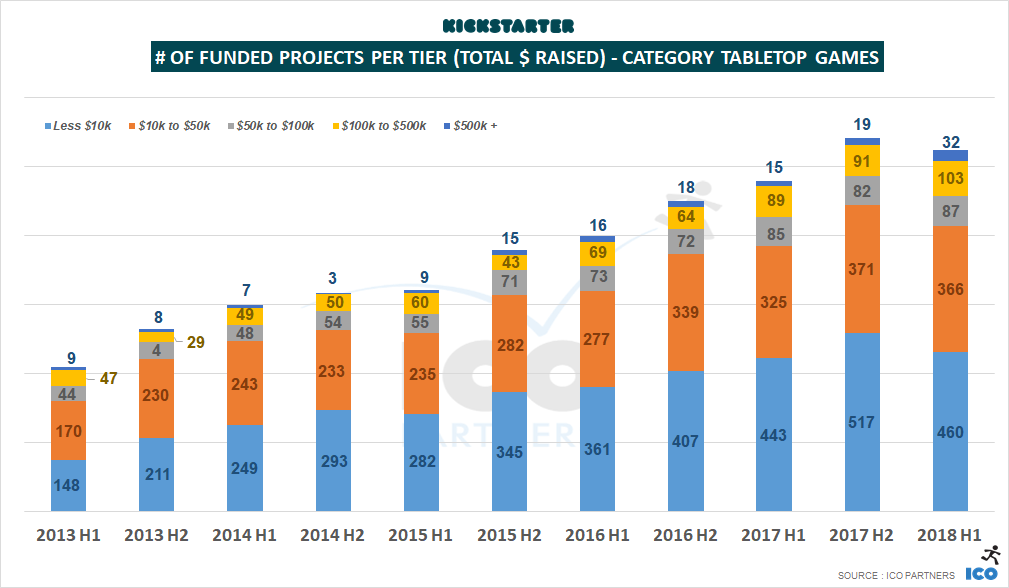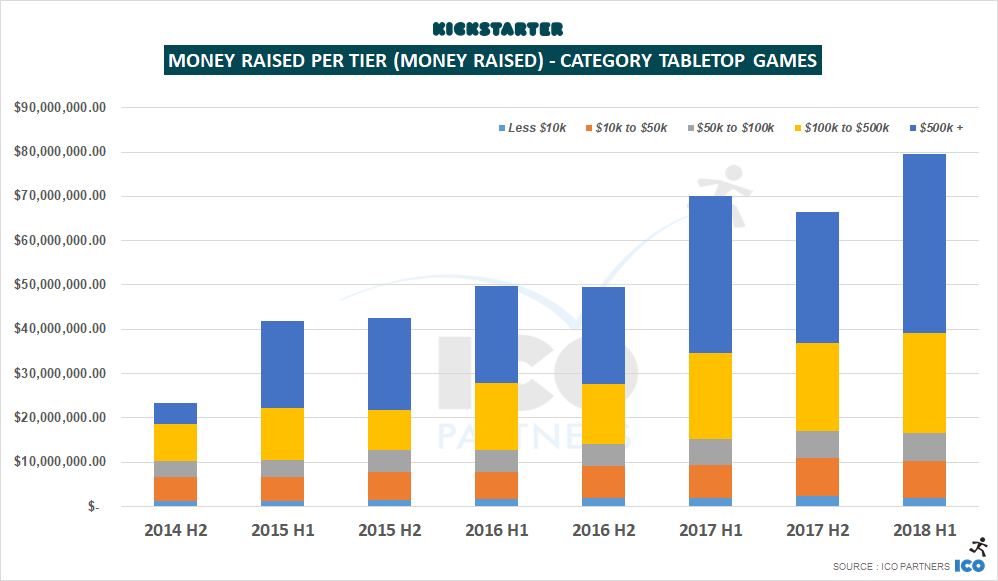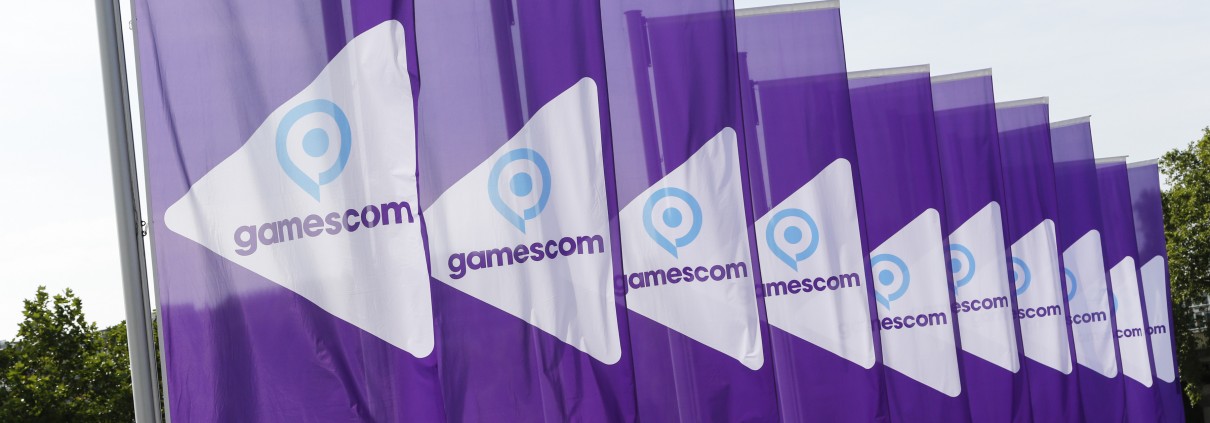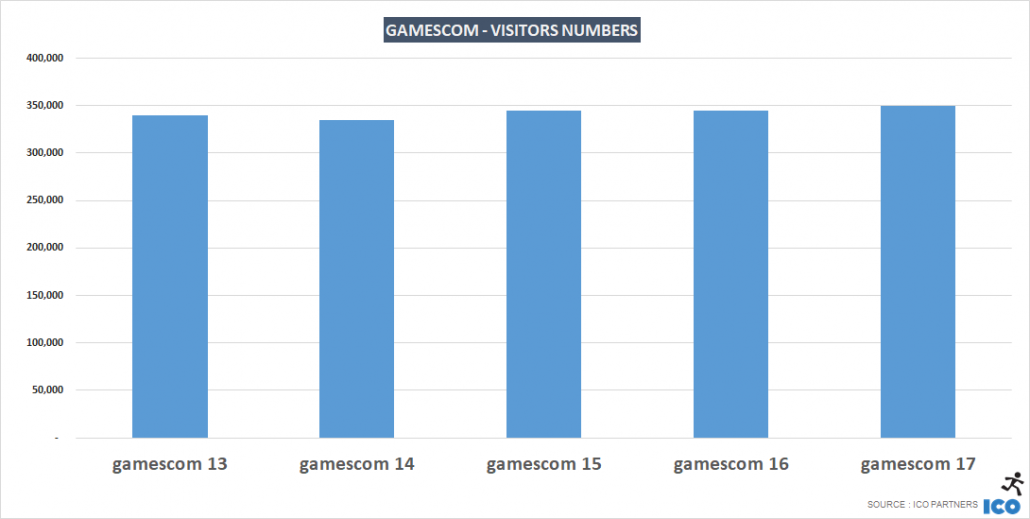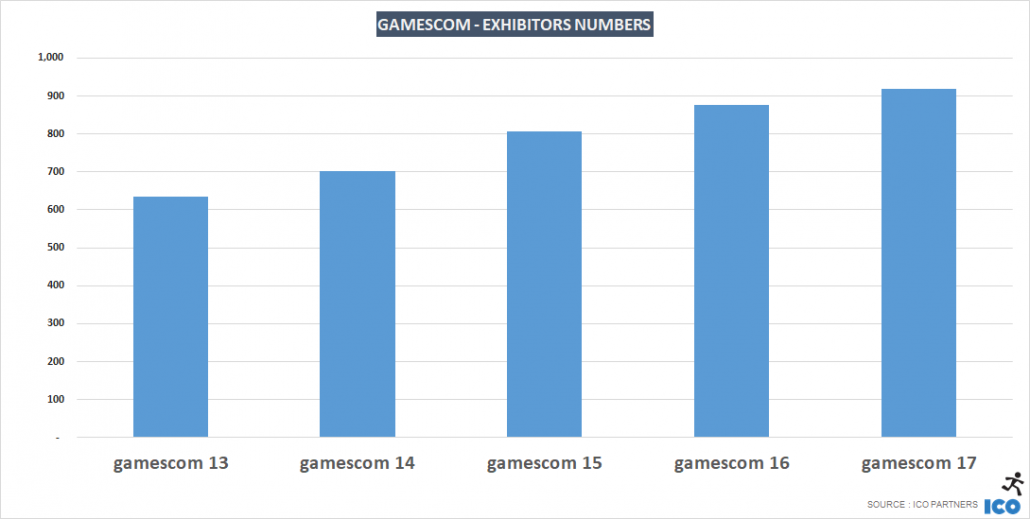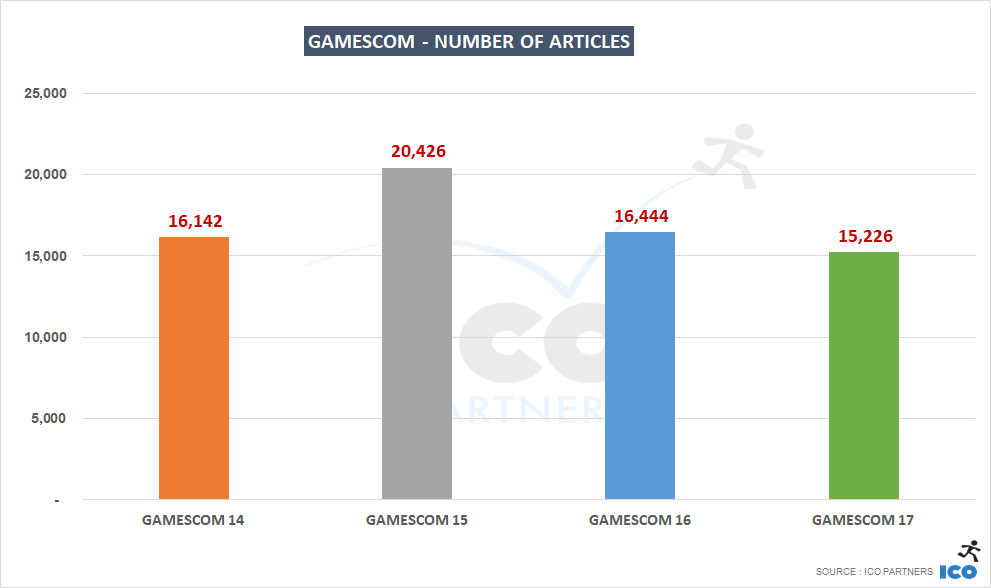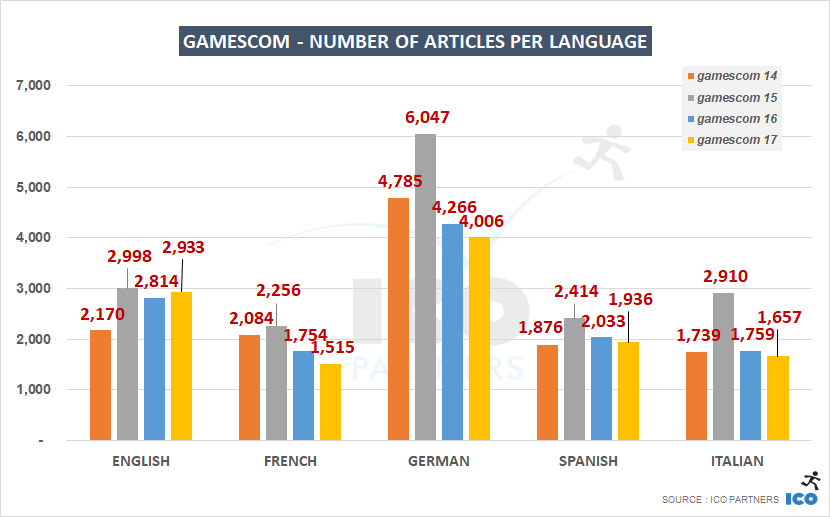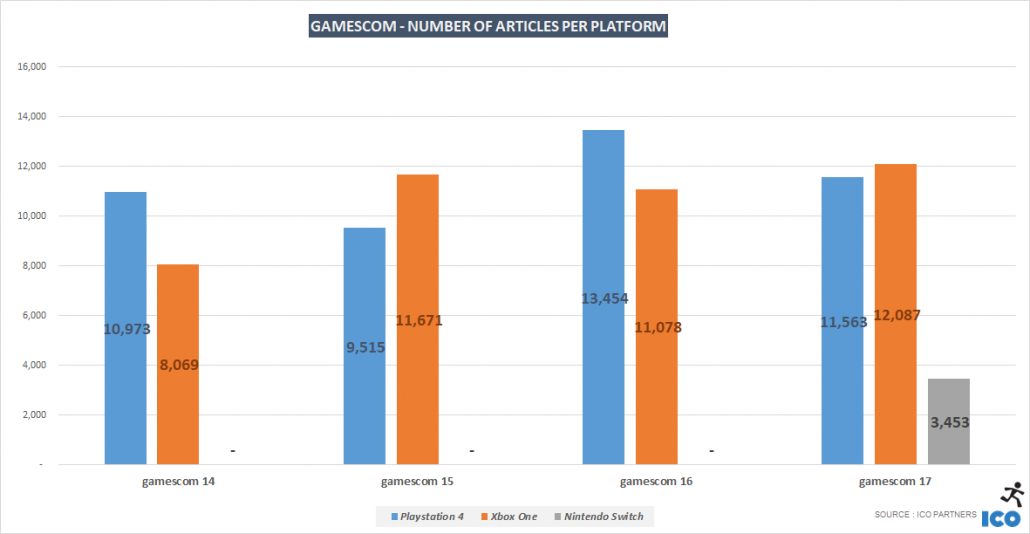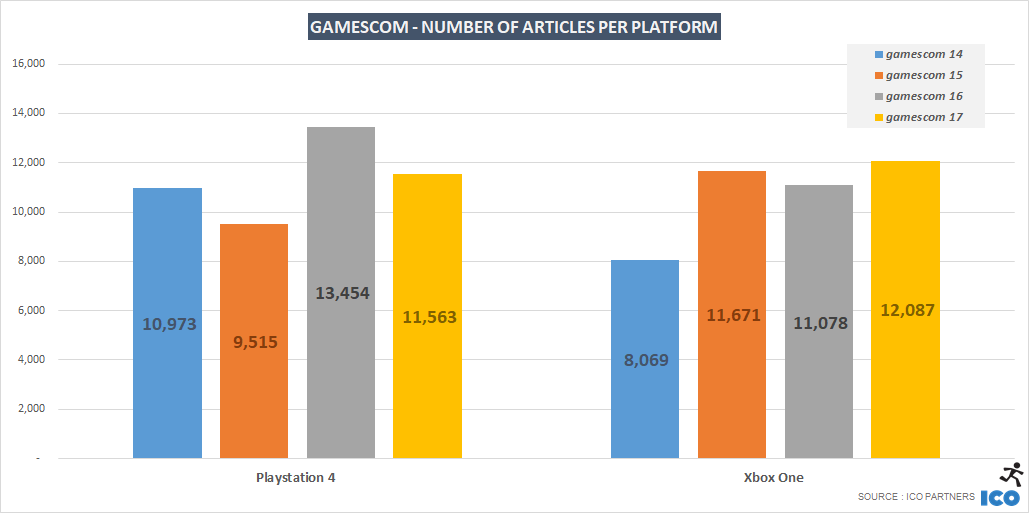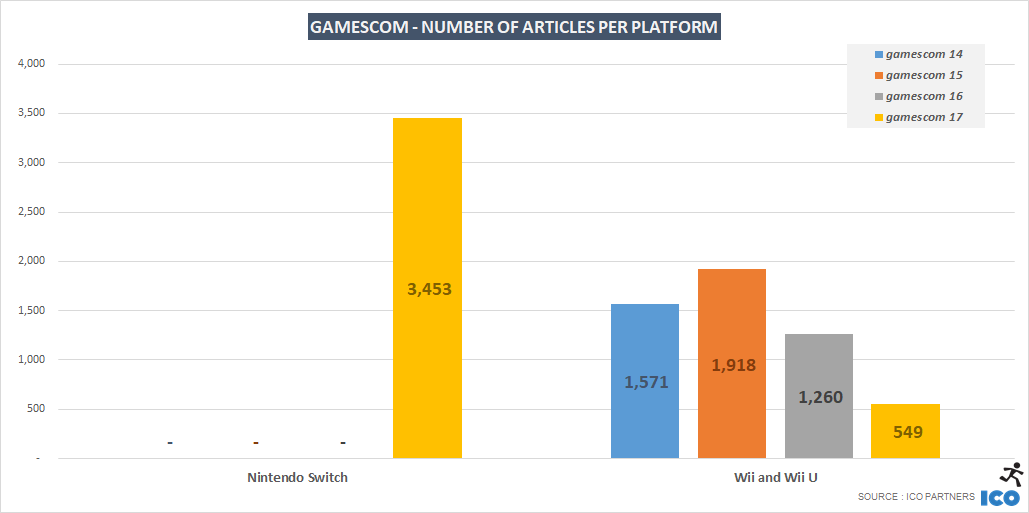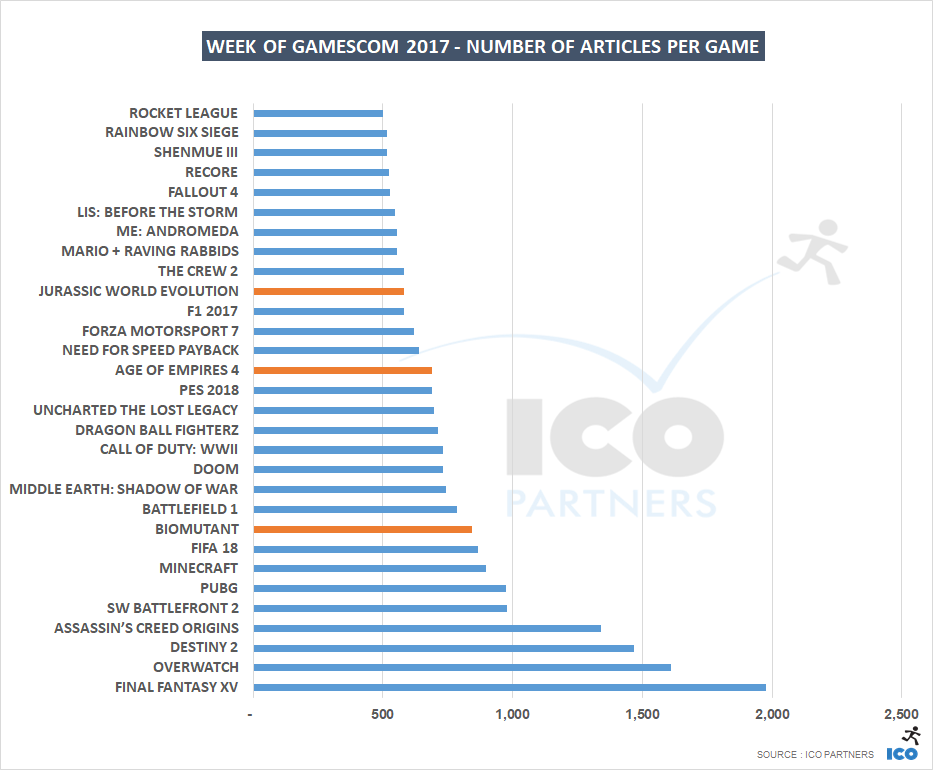A year has passed and it is time again to look at how the Kickstarter landscape for games has evolved over the past 12 months. Read more
Following up from yesterday’s blog post, you can find here the status for tabletop games on Kickstarter for the first half of 2019. Read more
As is now the ritual, I have done a deep dive into the Kickstarter data we gather and put together some notes for you to look at how well video games are doing for the first half of 2019. Read more
As an addition to the traditional mid-year crowdfunding check, for video games, I have decided to give tabletop games their own blog post this year. There is a dedicated interest for these numbers, and they are quite fascinating to follow.
As a quick catch-up, you might want to have a look at the post on the year 2017 performance for games on Kickstarter.
The Kings of Kickstarter
Let’s get started with the question I always get when talking about the ongoing performance of the tabletop category on Kickstarter: is the bubble bursting yet?
Well. Nope.
And it’s hard to say if it is indeed a bubble at all, considering how steady the growth has been.
Tabletop games have almost raised $80m in just 6 months this year.
Tabletop Games have raised more money than any other category on the platform during the period, and represent 30% of all the money raised on Kickstarter.
As a reminder, Tabletop Games were representing 23% of all the money raised on Kickstarter in the year 2017, and if there is a trend in seasonality we can see, it is that the second half of a year is usually bigger for projects of that subcategory.
I normally don’t use gifs in blog posts, I feel this warrants an exception.

Looking into the total number of campaigns launched on the platform, we can see a drop from the previous period.
However, this is in line with previous years, which see fewer campaigns during the first half of a year.
Looking at projects that got funded, we can also observe a drop where there has been a constant growth for the past five years. This is the first sign of either some fatigue, or maybe we have reached the critical mass of unique, quality tabletop projects that can be submitted in a given period. There has to be a ceiling on how many of these projects can exist.
What is important to note as well, though, is that the number of projects that failed has dropped by a higher ratio than the number of funded projects. Like for the video games projects, this shows a decrease in the number of projects going to the platform unprepared, or the drop of purely opportunistic projects. (Remember the potato salad effect? This might be the tail end of it.)
Despite a drop in the total number of projects that got funded, we end up with the highest “success ratio” for tabletop games ever.
Almost two thirds of the tabletop campaigns manage to reach their goal.
Looking at which tiers see a drop in the number of funded projects, we see a similar pattern to the video games update, with lower tiers suffering a drop in numbers:
- There are more projects raising more than $50,000 than ever before.
- 32 projects raised more than $500,000 in the first six months of 2018. That’s 13 more projects than the previous best semester.
Looking into the amount of money raised per tiers, we can observe a few more things:
- Unsurprisingly, with more funded projects in higher tiers, they have raised record amounts for all tiers above $50,000.
- Also notable is that all the projects in those $50,000+ tiers have raised more on average than any semesters before.
- Projects that raised more than $500,000 amount to a total of $40m raised this past semester. That’s half of all the money raised by tabletop projects, and 15% of all the money raised on Kickstarter during this period.
Other Platforms
I have had a very cursory look at other crowdfunding platforms, especially Ulule, Game On Tabletop, and Indiegogo, that all have tabletop games projects submitted to them on a regular basis. I have not been able to include them in this analysis though – the amount of time it would require to parse their projects, as they are not using the same categories as Kickstarter, was too significant in comparison to their relative size to Kickstarter. It would also require to filter projects that are reported in these platforms when they were in fact funded on Kickstarter and the platforms are used for Slacker/Late Backers campaigns or for pledge management.
Kickstarter is where most of the funding happens, and the overall trends can be taken from its numbers.
Concluding Words
The bubble is not bursting. If anything, there are signs of reaching a stable critical mass for tabletop projects. What is a more important take away to me is that games are now the cornerstone of Kickstarter, despite having very few features in place specifically to support them.
The Games category, taken as a whole, represents more than a third of all the money pledged to Kickstarter so far in 2018. It might be strategic for the platform to consider looking into building on that strength, or it will be leaving open this opportunity to one of the competing platforms.
This is the week after gamescom, and as is tradition, I have some numbers to share about the event. I will reference data from previous years (some slightly adjusted), as this exercise has been done now for 2014, 2015 and 2016.
gamescom 2017
New dates
As for the last 3 years in a row, the dates have changed, with gamescom roughly a week later than the previous year. Moreover, it now starts on Tuesday instead of Wednesday, and ends on the Saturday rather than the Sunday. For professionals (at least the ones coming from Europe), it has the advantage of covering the work week, you can easily be back home on Friday.
Press Conferences
Microsoft kind-of had a press event? It was more similar to the Nintendo Direct format, with no onsite event, just a live video event being streamed. For reference, the last time Sony had a press event at gamescom was in 2014; while Microsoft skipped last year.
The Microsoft event seemed very weak to me. They only announced one new game for Xbox, Jurassic World Evolution, and it is not a very strong fit for a console genre-wise. They actually held their best game announcement for the following day, revealing a new Age of Empires is coming. The limited Scorpio edition also got decent coverage, but it seems to me it is more a sign of how light the event was in content.
Numbers
I went and pulled the attendance numbers from the previous years, to see how gamescom is doing in that regard. You can find the 2017 numbers here.
gamescom is not growing much. It seems to have reach its critical mass a few years ago now. I was wondering if the change of dates, especially not having the Sunday anymore, would impact the attendance numbers negatively, but it seemingly had no effect, or it might have even helped that slight growth in attendance.
Trade visitors is also very stable, even if lower than the peak seen in 2015. 30,000 professionals attending is quite impressive, it has to be said.
The number of exhibitors though is ever increasing. The multiplication of smaller companies (indie studios; micro publishers; other vendors) is probably at play here.
There are also the odd exhibitors, whose presence is always a bit confusing:
https://twitter.com/icotom/status/899550107779178497
gamescom in the media
This year’s edition of gamescom was relatively underwhelming when it comes to strong media beats (new games; high profile announcements; trailers on high expectation games) – and the media coverage would reflect this.
gamescom 2017 has seen the worse performance where media coverage is concerned since I started tracking it in 2014. Arguably, the numbers stay in the same range as the ones of 2014 and 2016, but it seems like on one hand Microsoft didn’t put any real show with its media event; while on the other hand no one picked up on the opportunity that gamescom represents.
Looking at the volume of media coverage per languages, it is interesting to see the past trend of increased visibility of the event with English media continues. The drop of German coverage (both in volume of articles and number of media) is intriguing and might be the results of a shift in the German media landscape.
The Platforms
With Xbox having an extra dedicated event, it should not be surprising that it secured more coverage during the week of gamescom, regardless of how weak the announcements there were. Xbox One X is getting a lot of attention as the newest hardware to be available, and the games supporting it got their fair bit of coverage.
Despite 2017 being weak overall, it is the best gamescom for Xbox since I started tracking media exposure. I find it very interesting that at the Cologne Messe, in the public area, the Xbox booth was actually quite small again. Microsoft seems to be careful with their spending there, at least for the second year in a row. Both Nintendo and Sony had vastly larger spaces, but even major publishers, or game studios had more space. It seemed to me that the Farming Simulator’s booth was only a third of Xbox’. And the Wargaming booth, also in the same hall, was probably twice as big.
Despite this being a good year, I can’t help and wonder how much it could have been for Microsoft with a stronger line-up of reveals considering their performance with their half-hearted presence.
Rather than compare the media performance of the Switch to the PlayStation 4 or the Xbox One, I found it much more interesting to present it compared to the Wii and Wii U coverage of previous years. Like at E3, Nintendo is really ramping compared to during the Wii era. This weeks Showcase was also very interesting on the indie front, and should contribute to Nintendo media coverage growth.
The Games
Games in orange were the ones first announced during this gamescom (arguably, Biomutant leaked a few days earlier).
Like last year, these were the top 30 games based on their media coverage. Here are a few thoughts:
- Final Fantasy XV had multiple announcements that week, taking it to the lead in coverage. Interestingly, it was also a top game last year.
- Overwatch is still very strong in the media. Blizzard is quite careful about always having announcements to make during gamescom, and it is paying off.
- Playerunknown’s Battlegrounds took a while to build its media presence. The Xbox One port is certainly helping, but the general strong interest in the title is putting it firmly on the list of media darlings, in a similar way to Rocket League.
- Biomutant’s strong media presence is proving that gamescom is an excellent opportunity for publishers with less muscle than the publishing powerhouses using E3 as their main media event of the year.
- Jurassic World Evolution and Age of Empires IV, the two new titles announced by Microsoft, secured a significant amount of coverage, but nothing actually crazy. Most of Microsoft media coverage was around the titles supporting the new Xbox One X, rather new games.
Closing Words
Next year, gamescom’s dates are for once not changing. They keep the Tuesday to Saturday formula, at the end of August. It will be interesting to see if more companies decide to use it as a springboard to announce new titles, following the steps of THQ Nordic’s Biomutant.
Post-Scriptum – If you have been following us for a while, you might have recognized Martin Rabl, an ICO alumni, on the coverage of Angela Merkel’s visit of gamescom:
This just happened! My pulse is slowly getting back to normal. 🙂 #farmingsimulator #gamescom #Merkel pic.twitter.com/5yOdZJIOEe
— Martin Rabl | Amboss (@martin_rabl) August 22, 2017

